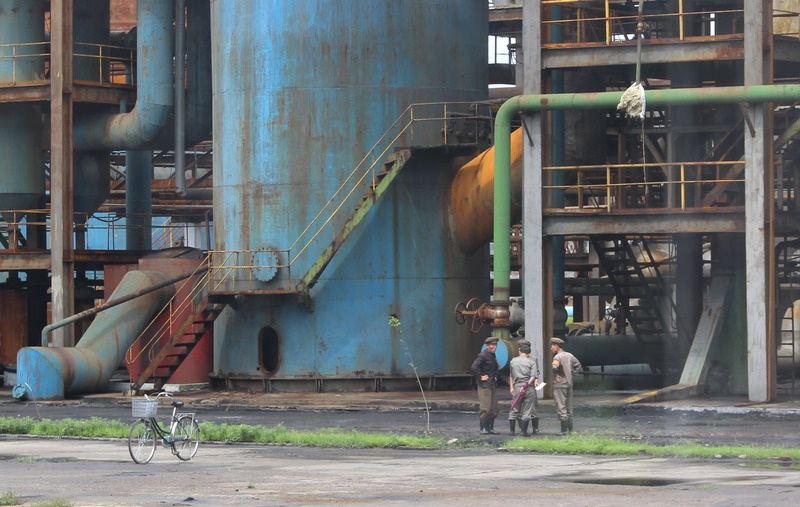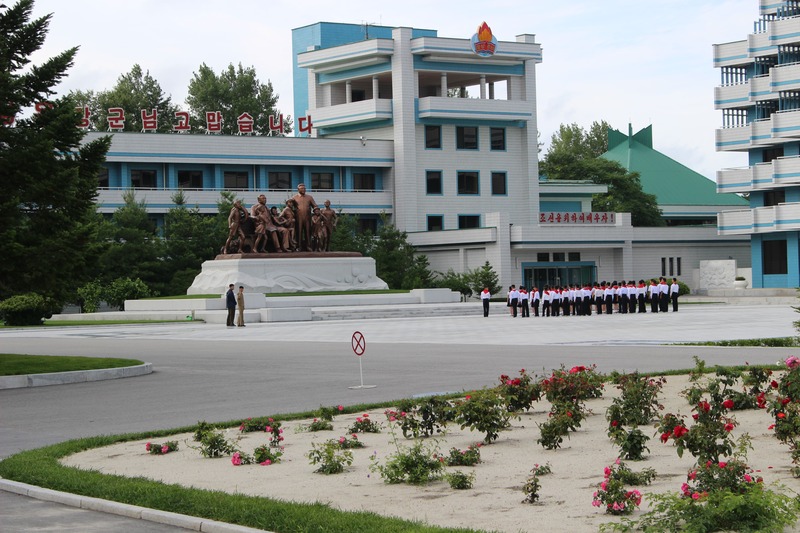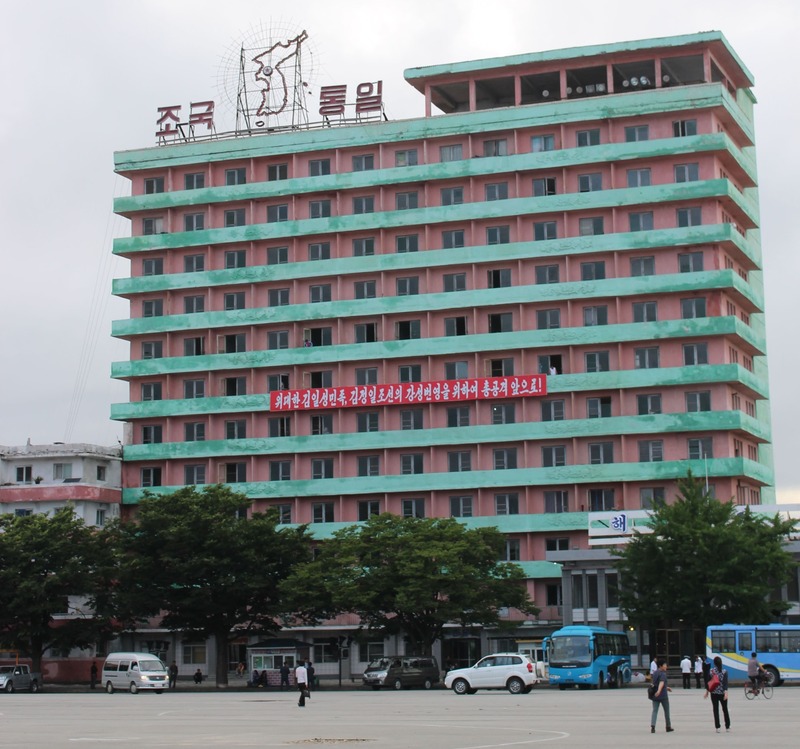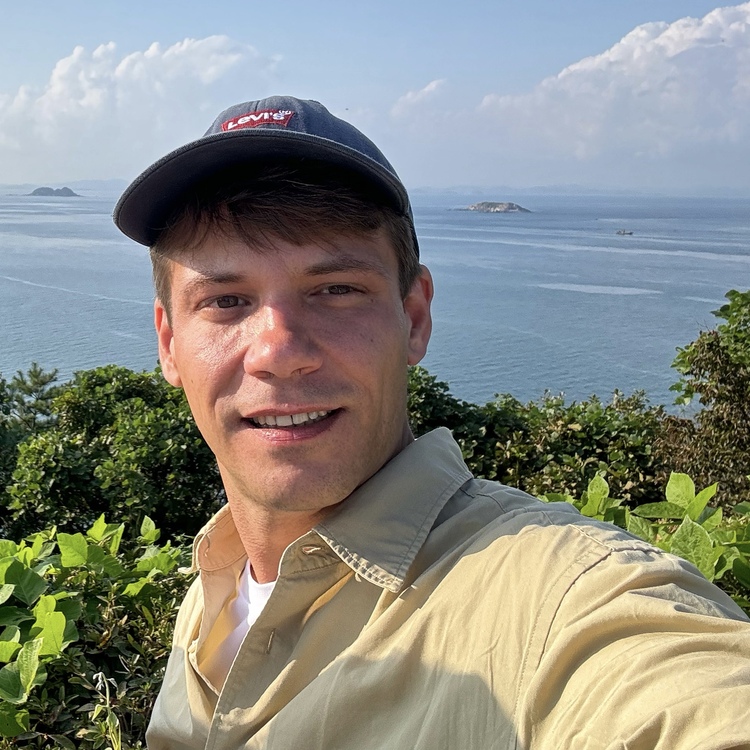In retrospect, I don't rule out the possibility that the announcer reported the success of the missile test as one happened during my stay there.
This is part of a large series by tour leader Greg recounting his first trip to North Korea.
See below for the different parts;
"The Last City of the DDR"
Today, Hamhung is the second largest city of the DPRK and it is often referred to as the last city of the GDR (East Germany).
Hamhung - just like the rest of Korea - was heavily damaged during the Korean War and from 1955 to 1962 German Working Group Hamhung was in charge of rebuilding the city.
They were not only responsible for re-establishing the city's industry and rebuilding the city but also trained Koreans who later became specialists and workers in the construction industry.
Germans were not the only nation helping to rebuild the country after the Korean War in the name of the internationalist-socialist Brotherhood.
The Chinese People's Volunteers stayed in the country till 1958 to help in the rebuilding. As they left, the DPRK started its repatriation campaign of Korean Residents in Japan.
Hungarians, who sent the first-ever foreign medical team to Korea in 1950 to help the Korean War effort, stayed till 1957.
They played a pivotal role in the establishment of North Hwanghae Provincial Hospital in Sariwon (back then known as Rákosi Mátyás Hospital named after the Chairman of the Hungarian Workers' Party).
The city is famous for its chemical and heavy industry and for being the city that suffered the most during the Arduous March.
During the briefing in Beijing, James referred to Hamhung as a counterpoint to Pyongyang.
While one can photograph almost anything in Pyongyang, one needs to be more tactful in Hamhung, especially when photographing people. Indeed, this was the only place where I was told off for taking too many pictures.
During our visit, a local man in a Mao suit also accompanied us throughout the city.
But don't forget that the city was only opened up in 2010 for tourists.
Visiting Hamhung
Our first stop of the day was Hungnam Fertilizer Factory. Here, we visited a factory unit, the control room, and the finished product storage.
We were guided by an older specialist who gave a short chemistry lecture on the production of ammonia.
In the factory, there were factory policemen, a car with loudspeakers that tirelessly broadcasted propaganda, and propaganda posters everywhere.
Workers' clothes, Mao suits, Lenin caps, and rubber boots were the typical attire.

Workers in discussion at Hungnam Fertilizer Factory
Then, we visited the Hamhung Grand Theatre which is the largest in the country and was built in 1984.
Unfortunately, it is not open for visits inside.
When we went to the other side of the road at the theatre to photograph the theatre from a better angle, as well as a monument opposite it.
After a while Mr. Ri suggested that we slowly go back to the theatre on the other side of the road because the monument is not included in the official program.
Before lunch, we visited the statues of the leaders in Hamhung. They are situated on a hill overlooking the main street of Hamhung and Songchon River.
Our lunch was in Sinhungsan Hotel on the main road of Hamhung.
Wonsan
After lunch, we left Hamhung and headed south.
Our next stop was Wonsan Agricultural University. The university was founded in 1948 on the compounds of a nationalized German Benedictine abbey. Today the university is the backbone of agricultural education in North Korea.
The campus has a rather nice atmosphere. You feel like studying there. It's practically located in a park with trees from time immemorial at the junction of mountains and valleys.
Our tour of the university was dedicated to the leaders' positive, decisive influence on the university.
A separate room in the seminar building deals with the university's former presidents, famous students, guest students, and the visits of Kim Il Sung and Kim Jong Il.
We also visited a classroom where every desk has a cable that students can use to connect their computers to the intranet, and a student was working on his laptop in the corridor.
We also visited a greenhouse, where they use computer technology to ensure favourable conditions for the plants growing there.
It is a tradition that first-year students plant a tree, and then another after they graduate.
The tree-planting campaign is not unique to this university neither it is to North Korea.
South Hamgyong Province & Trees
When I was studying Korean at Pyongyang Tourism College senior students disappeared for a few days as they went to South Hamgyong Province to plant trees.
In South Korea, between 1946 and 2005 April 5th was celebrated as Arbor Day. Although the tree-planting campaigns started during the Syngman Rhee regime they lost their significance quickly but gained a new impetus during the military dictatorship of Park Chung-hee. He once famously said that "a man who does not love trees cannot be called a true lover of the country".
Arbor Day is celebrated on March 2nd in the DPRK since 1946.
After the university, we visited the Songdowon International Children's Camp, where foreign students still come to this day. The camp is more of a holiday centre than a camp. It welcomes young compeers worthy of a state-sponsored holiday all year round.
The housing unit is quasi a hotel, with escalators, and six-bed air-conditioned rooms with TVs (at least what we saw).

A new rotation of holiday-making compeers just arrived at the camp and they line up to pay their respect to the leaders
The "Palace of Culture" has a huge theatre hall, computer rooms, a game room, a library, a gallery, and a forestry training room.
The camp has a stadium, a swimming pool, and a slide park. In addition to the residential unit and the Palace of Culture, we visited an indoor labyrinth with mirror walls, the aquarium (with sharks, rays, and dolphins) and the aviary.
I don't know what it takes to be lucky enough to come here as a camper.
After the children's camp, we headed to Wonsan, our pit stop for the night.
The bus dropped us off at the main square. On the other side of the road is the seaside promenade and the statues of the leaders.
After a short walk, we went to a fish restaurant for dinner and then walked to the hotel. The atmosphere of the hotel reminded me of the remnants of my childhood at trade union resorts on Lake Balaton.

Apartment building on Wonsan Main Square. Another piece of history: the map of the Korean Peninsula with the slogan 'Unification of the Fatherland'.
Wonsan Pier
After settling into the hotel, we took a short walk across the pier to the lighthouse.
Here we experienced a complete lack of public lighting and we had to walk with flashlights.
During the walk, I saw a soldier walking hand in hand with his girlfriend, several people were fishing and grilling fish on the pier. There was also a fish restaurant under a tent.
Any time I go to Wonsan I am tempted to stop at one of these restaurants but unfortunately, none of my guides were courageous enough to make this call.
In the hotel, I watched the state television, where they were showing the first episode of a film about the life of Kim Il Sung from the era of resistance against Japan to the founding of the state.
After that, there was a longer coverage of Kim Jong Un's visit to a turtle farm, followed by footage of the Korean landscape, the army, and the crowds celebrating the leader.
This was followed by a passionate performance of an announcer, at which point I turned off the TV.
During breakfast the next morning, my Kiwi travel companion told me that they were at the bar in the evening and when this passionate announcer came on, the North Koreans finished the conversation and everyone was glued to the screen.
In retrospect, I don't rule out the possibility that the announcer reported the success of the missile test as one happened during my stay there.
